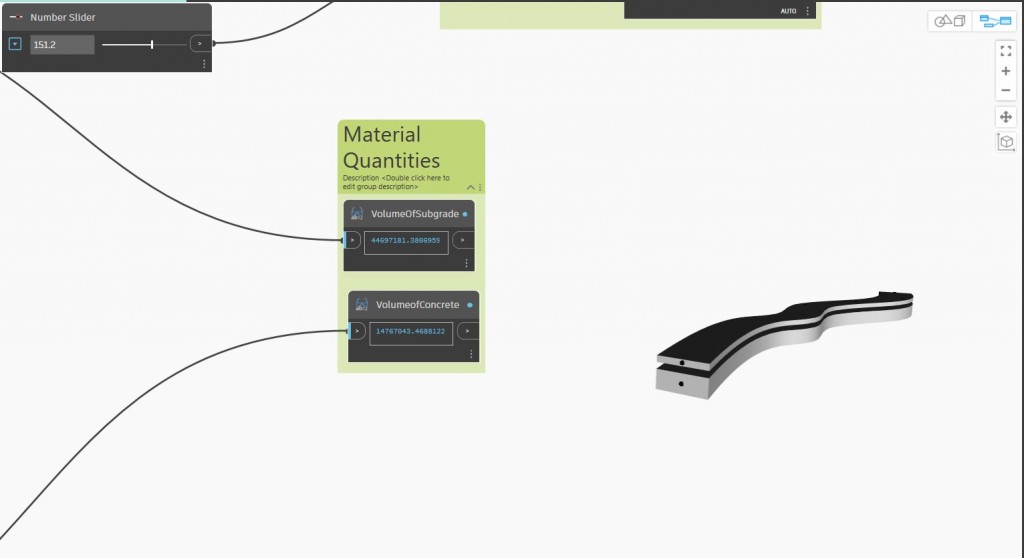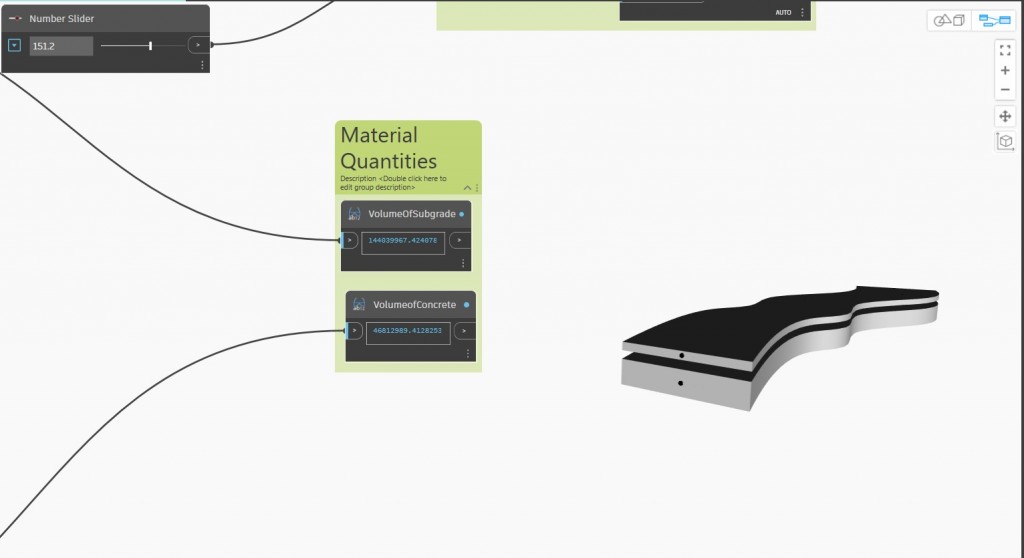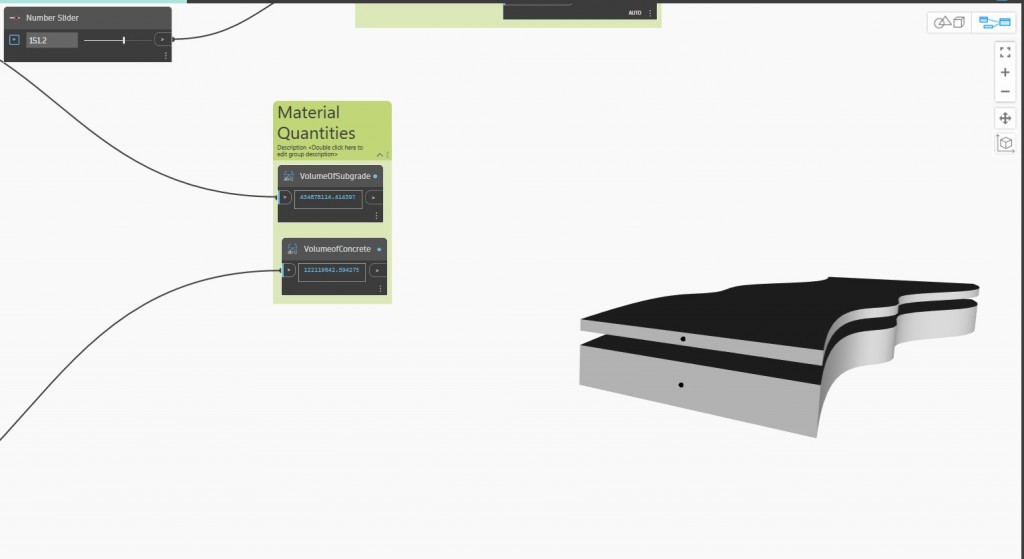Design Challenge
The main idea which represents the foundation of developing a parametric model for a Rigid Pavement is to support Quantity Surveying.
Design Parameters and High-Performance Criteria
The following parameters were selected as the ones to control the parametric model:
- Width of Pavement
- Thickness of Pavement Layer
- Thickness of Subbase
Chosen High-performance criteria:
- K value of Subgrade reaction
- W/C ratio of Concrete
Water-Cement Ratio is a key parameter that influences the strength and durability of the concrete. For rigid pavements, such as those made of plain or reinforced concrete, a lower water-cement ratio of around 0.45 is generally recommended. The subgrade reaction coefficient, often denoted as “k value,” is a measure of the stiffness of the subgrade (foundation soil) beneath a rigid pavement structure. It is used to model the support provided by the subgrade to the pavement slab.
Parametric Model Description
By varying the design parameters on the left, we can evaluate the design options and study the required materials for its construction. Thus, it will also be helpful in cost estimation. Clients can quickly generate design options and use the volumetric data for a cost estimation study. Moreover, another block of code can be added to this .dynamo file to automate the cost estimation procedure.
Figure 1
Figure 2
Figure 3
Parametric Model
model6666 by Dani Zaeem on Sketchfab
References
1. Concrete Pavement Design, Construction, and Performance, — Norbert J. Delatte — 2014


